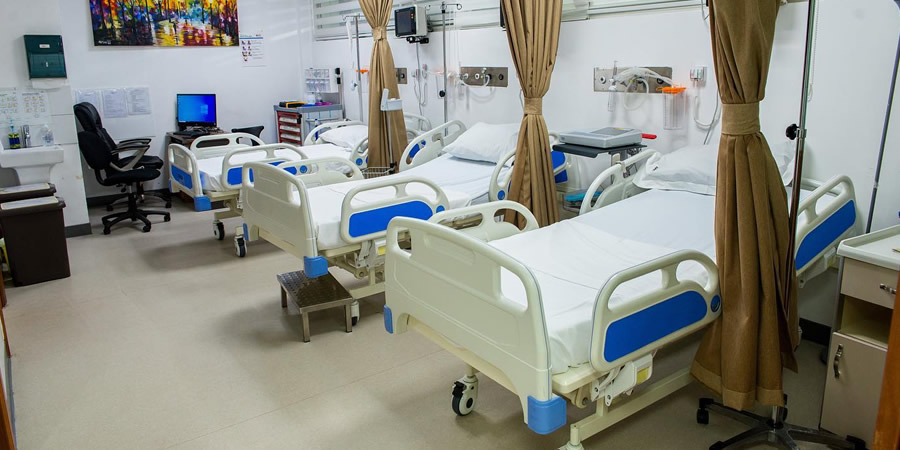

AGRICULTURAL SECTOR
Agriculture
Agriculture is the main economic activity in the Municipality in terms of employment and income generation, with about 65 percent of the economically active population engaged in agriculture (including fishing) and agro-processing. It also constitutes the main source of household incomein the Municipality. Below are detailed discussions on the factors that determine the performanceof the Municipality in the sector:
Cropping Sight, 2.5 Emotion, 14.2 Hearing, 33.7 Intellect, 33.6 Sp ee ch, 15 The average farm size is estimated at 1 hectare. For the plantation crops such as cocoa and rubber,the average farm size is 2 hectares. Slash and burn is the common practices of land preparation in the municipality. The major tree crops are coconut, oil palm, rubber and cocoa with cassava and plantain being the major food crops. Vegetables such as garden eggs, pepper and tomatoes are also cultivated among other crops. Food crops such as cassava, maize, cocoyam and plantain aregrown extensively both for subsistence and for cash. However, due to the absence of any efficientprocessing and storage facilities, post-harvest losses are high and farmers’ incomes are low.
Coconut Sector
Coconut used to be grown extensively in the municipality especially in the southern part. It usedto be processed into coconut oil and exported mainly to Accra, Kumasi, Tarkwa and Obuasi. In recent years, the lethal yellowing disease of coconut locally called Cape St. Paul’s Wilt Disease (CSPWD) has devastated the coconut plantations along the southern coast of the Municipality.
This has seriously affected the economic livelihood of the people in these areas, leading to low incomes and increased unemployment. The dwindling production base of the local coconut industry has also adversely affected the internal revenue base of the Assembly. The Agric. Department of the Assembly is actively encouraging farmers to plant improved coconut seedlingsthat are resistant to the CSPWD even though with some difficulty as farmers are not showing muchenthusiasm.
Cocoa
Cocoa is grown mostly in the forest areas which occur in the northern part of the municipality. Even though crop yield per acre for cocoa in these areas are comparatively low due to the acidic nature of the soils, farmers have migrated, especially, to the Gwira area to embark on cocoa cultivation. Land area under cocoa cultivation in the municipality is estimated at around 35,000 hectares. Capsid infestation and the Black pod disease are major problems of this crop. Productivity has also been affected by lack of information on soil suitability. Efforts and new measures have beenput in place, especially the mass spraying of the farms, planting of improved varieties, and use of government subsidized fertilizer to help improve the yield of cocoa.
Livestock Production
The livestock subsector of the Municipality is underdeveloped. This may be attributed to the high investment capital required to operate such a venture. Notwithstanding, the sector has over the years seen some form of expansion. The municipality is committed to doubling its efforts in the development of the sector.
Marine Fishing
The Municipality is a major player as far as marine fishing in the country is concerned. Of the 90 landing beaches in the region 13 are found in the Municipality. Marine fishing is seasonal. The major fishing season is between July & September with minor season occurring in November – January. The common types of fish landed being sardinella andthe tunas.
Agriculture is the main economic activity in the Municipality in terms of employment and income generation, with about 65 percent of the economically active population engaged in agriculture (including fishing) and agro-processing. It also constitutes the main source of household incomein the Municipality. Below are detailed discussions on the factors that determine the performanceof the Municipality in the sector:
Cropping Sight, 2.5 Emotion, 14.2 Hearing, 33.7 Intellect, 33.6 Sp ee ch, 15 The average farm size is estimated at 1 hectare. For the plantation crops such as cocoa and rubber,the average farm size is 2 hectares. Slash and burn is the common practices of land preparation in the municipality. The major tree crops are coconut, oil palm, rubber and cocoa with cassava and plantain being the major food crops. Vegetables such as garden eggs, pepper and tomatoes are also cultivated among other crops. Food crops such as cassava, maize, cocoyam and plantain aregrown extensively both for subsistence and for cash. However, due to the absence of any efficientprocessing and storage facilities, post-harvest losses are high and farmers’ incomes are low.
Coconut Sector
Coconut used to be grown extensively in the municipality especially in the southern part. It usedto be processed into coconut oil and exported mainly to Accra, Kumasi, Tarkwa and Obuasi. In recent years, the lethal yellowing disease of coconut locally called Cape St. Paul’s Wilt Disease (CSPWD) has devastated the coconut plantations along the southern coast of the Municipality.
This has seriously affected the economic livelihood of the people in these areas, leading to low incomes and increased unemployment. The dwindling production base of the local coconut industry has also adversely affected the internal revenue base of the Assembly. The Agric. Department of the Assembly is actively encouraging farmers to plant improved coconut seedlingsthat are resistant to the CSPWD even though with some difficulty as farmers are not showing muchenthusiasm.
Cocoa
Cocoa is grown mostly in the forest areas which occur in the northern part of the municipality. Even though crop yield per acre for cocoa in these areas are comparatively low due to the acidic nature of the soils, farmers have migrated, especially, to the Gwira area to embark on cocoa cultivation. Land area under cocoa cultivation in the municipality is estimated at around 35,000 hectares. Capsid infestation and the Black pod disease are major problems of this crop. Productivity has also been affected by lack of information on soil suitability. Efforts and new measures have beenput in place, especially the mass spraying of the farms, planting of improved varieties, and use of government subsidized fertilizer to help improve the yield of cocoa.
Livestock Production
The livestock subsector of the Municipality is underdeveloped. This may be attributed to the high investment capital required to operate such a venture. Notwithstanding, the sector has over the years seen some form of expansion. The municipality is committed to doubling its efforts in the development of the sector.
Marine Fishing
The Municipality is a major player as far as marine fishing in the country is concerned. Of the 90 landing beaches in the region 13 are found in the Municipality. Marine fishing is seasonal. The major fishing season is between July & September with minor season occurring in November – January. The common types of fish landed being sardinella andthe tunas.
Date Created : 11/11/2025 2:24:43 PM








 facebook
facebook
 twitter
twitter
 Youtube
Youtube
 +233 593 831 280
+233 593 831 280 0800 430 430
0800 430 430 GPS: GE-231-4383
GPS: GE-231-4383 info@ghanadistricts.com
info@ghanadistricts.com Box GP1044, Accra, Ghana
Box GP1044, Accra, Ghana